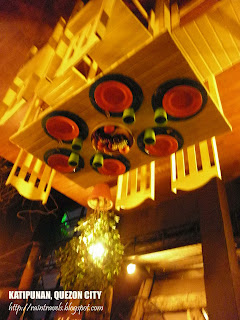When you travel a lot, there's bound to be a person who feels a bit bad that you are often out of the house. Not in a selfish kind of way but more of the whimsical I-wish-I-could-go-there-too kind of way. In my case, it was my 9 year old nephew who is one of the first people to look at my travel photos. Because he is many years away from being 18, I decided to let him join in one of my trips, some place interesting but not too far from home. It was going to be a place where he could learn more about local food. I called our trip, "The Large Salt Bread Adventure".
For those not familiar with salt bread or salted bread, it is a traditional Filipino baked roll. It is locally known as Pan de sal and it is usually eaten during breakfast or snacks. It is typically made of yeast, flour, eggs, sugar and salt. One can eat it plain or with filling. Unfortunately, the salt bread sold in most city bakeries today are small and can hardly fit one's palm. When you squeeze it a bit, it gives off a quiet whimper before shrinking in size. This is a far cry from the classic Pan de sal that people used to enjoy in the countryside. Now, if a trip in search of a large, classic salt bread doesn't sound like much of an adventure for a kid, wait till you see where I brought my nephew:
 |
| Why is the roof on the sidewalk? |
 |
| Bored? Download then rotate this image or turn the screen upside down! |
Pan de Amerikana looked so interesting from the outside that my nephew initially refused to get inside. ("I wanna look at the car! I'm not hungry yet.") I had to tell him there were more interesting stuff inside. Take a look at some of them here:
 |
| Inverted tables and chairs |
 |
| Wouldn't it be exciting to play on this piano? |
 |
| Don't worry, this table ain't falling down. |
 |
| Chow time: (Clockwise) Pan de sal with corned beef, pancit canton and turon |
I showed my nephew, too, where the pan de sal was baked and made sure that we bought some bread home. My nephew observed that most of the people bought at least 2 bags of pan de sal. I guess those folks miss the classic pan de sal.
To conclude our large salt bread adventure, I made sure to take this photo of my nephew:
 |
| An upside-down shot at an upside-down restaurant |
--------------
Do you want to see more photos of Pan de Amerikana? Go to my Facebook page.
Have you been to Pan de Amerikana? Tell us how it was like in the comments section!

No comments:
Post a Comment
Got something to share? Leave a comment.(Just make sure it's not nasty.)